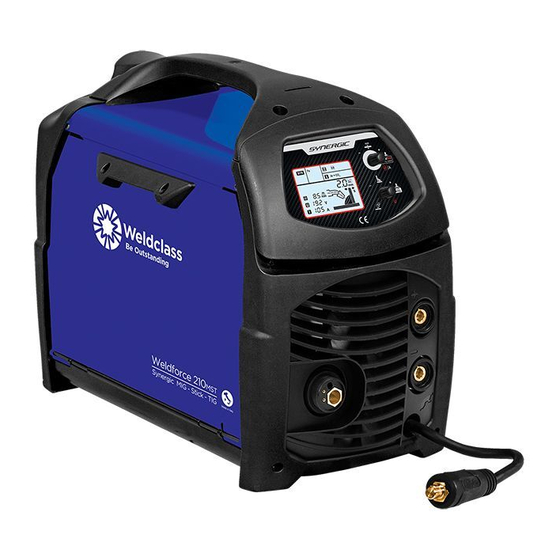
Table of Contents
Advertisement
Quick Links
Weldforce 210
& 250
MST
MST
Weldforce 210MST & 250MST
Synergic MIG – Stick – TIG
OPERATING INSTRUCTIONS
Edition 2.7
IMPORTANT!
To qualify for full 24 month warranty, you must register within 30 days of purchase. See inside for details.
Read these Operating Instructions Completely before attempting to use this machine. Save this manual and
keep it handy for quick reference. Pay particular attention to the safety instructions we have provided for
your protection. Contact your distributor if you do not fully understand anything in this manual.
© Weldclass 2020 | E.&O.E.
1
Advertisement
Table of Contents
Troubleshooting
















Need help?
Do you have a question about the Weldforce 210MST and is the answer not in the manual?
Questions and answers